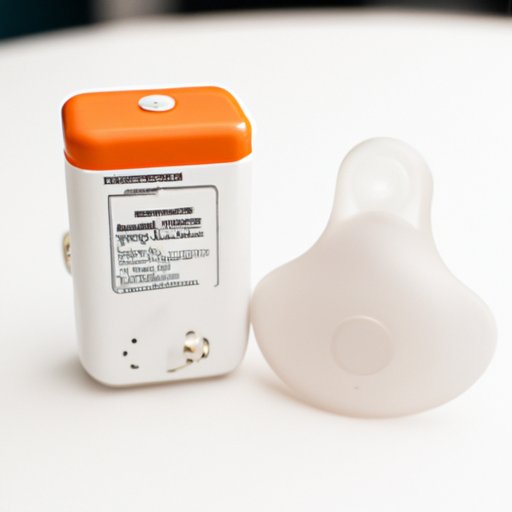
Introduction
For new parents, feeding their baby is a top priority. For many mothers, this means breastfeeding, which requires not only dedication and time, but also the necessary equipment to make the process smoother and more comfortable. One of the essential items new mothers need is a breast pump, which can be expensive. However, there are several ways to access a free or low-cost breast pump. This article provides a comprehensive guide on how to get a free breast pump and outlines how to qualify for different sources, including health insurance, non-profit organizations, and government programs.
A Guide to Free Breast Pumps: Where to Find and How to Qualify for Them
Before delving into specific sources of free breast pumps, it’s helpful to have an overview of the options available. There are several avenues to explore, including insurance coverage, non-profit organizations, and government programs, such as Medicaid and WIC. The criteria for eligibility vary between sources, and some require additional documentation, such as a prescription from a doctor. It’s crucial to research and understand each option’s requirements before starting the application process.
6 Simple Steps to Get a Free Breast Pump Through Your Health Insurance
Many health insurance policies offer coverage for breast pumps, including manual, electric, and double electric pumps. The Affordable Care Act (ACA) mandates that most insurance plans provide coverage for breastfeeding equipment and counseling, including breast pumps. The specific equipment covered may vary depending on the insurance carrier, but most plans cover at least a standard electric pump. The application process for insurance-provided breast pumps is generally straightforward and involves filling out an application form and providing medical documentation, such as a prescription. It’s essential to understand the timing of the application process and work within the insurance company’s timeline to maximize benefits and avoid out-of-pocket expenses.
How Low-Income Families Can Get Free Breast Pumps from Non-Profit Organizations
Several non-profit organizations provide free breast pumps to low-income families and those experiencing financial hardship. These organizations typically require documentation, such as proof of income and family size. Some organizations also prioritize serving certain communities or situations, such as military families and premature infants. It’s crucial to research different organizations and their eligibility criteria to find the best fit for your needs. Additionally, it’s essential to keep in mind that these organizations may have limited resources and may not be able to fulfill all requests.
Maximizing Your Benefits: Tips for Using Your FSA or HSA to Cover the Cost of a Breast Pump
If you have a flexible spending account (FSA) or health savings account (HSA), you may be able to use the funds to cover the cost of a breast pump. Under these plans, breastfeeding equipment is considered an eligible expense. However, it’s vital to check with your plan administrator to confirm that breast pumps and accessories qualify for reimbursement and that you follow the correct procedures to submit a claim.
Free Breast Pumps: Understanding Medicaid Coverage and Requirements
For families who live at or below the poverty line, Medicaid can be a valuable resource for accessing a breast pump. Medicaid provides coverage for breast pumps for eligible mothers throughout the duration of breastfeeding, with some restrictions. The eligibility requirements for Medicaid coverage of breast pumps may vary depending on the state, but generally, the program covers standard electric breast pumps. It’s crucial to work with Medicaid representatives to understand your coverage and follow the requirements for documentation and timing of the application process.
From WIC to Workplace: Getting a Free Breast Pump in Different Scenarios
There are several additional contexts where free breast pumps may be available, such as through the Women, Infant, and Children (WIC) program or workplace accommodations. The WIC program provides eligible mothers with not only nutritious food but also breastfeeding support and equipment, including a breast pump. The eligibility criteria and application process for WIC breast pumps vary by state. Some employers may also provide accommodations and resources, such as access to lactation consultants and breast pumps, to support working mothers. It’s essential to research and understand the resources available in your specific context and work with your employer or program representatives to access these resources.
Conclusion
Access to breastfeeding resources, including breast pumps, is essential for new parents. Thankfully, several options exist for obtaining free or low-cost breast pumps, such as health insurance, non-profit organizations, and government programs. It’s essential to understand the eligibility criteria and application processes for each option and research different resources available. By utilizing the various options, parents can find a breast pump that fits their needs and financial situation, making breastfeeding a more comfortable and sustainable experience for mother and baby.





